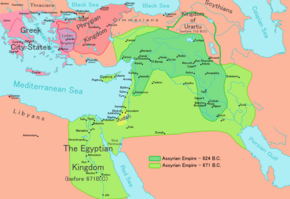
Back مراسلات الدولة في الإمبراطورية الأشورية الحديثة Arabic Comunicaciones estatales en el Imperio neoasirio Spanish Komunikasi pemerintah di Kerajaan Asiria Baru ID Comunicazioni nell'Impero neo-assiro Italian 新アッシリア帝国における国家通信 Japanese په نیو اشوري امپراتورۍ کې دولتي اړيکې Pashto/Pushto Comunicações estatais no Império Neoassírio Portuguese

The state communications in the Neo-Assyrian Empire allowed the Assyrian king and his officials to send and receive messages across the empire quickly and reliably. Messages were sent using a relay system (Assyrian: kalliu) which was revolutionary for the early first millennium BCE. Messages were carried by military riders who travelled on mules. At intervals the riders stopped at purpose-built stations, and the messages were passed to other riders with fresh mounts. The stations were positioned at regular intervals along the imperial highway system. Because messages could be transmitted without delay and without waiting for riders to rest, the system provided unprecedented communication speed, which was not surpassed in the Middle East until the introduction of the telegraph.
The efficiency of the system contributed to the Neo-Assyrian Empire's dominance in the Middle East and to maintaining cohesion throughout the empire. These Assyrian innovations were adopted by later empires, including the Achaemenid Empire which inherited and expanded the Assyrian communication network.
© MMXXIII Rich X Search. We shall prevail. All rights reserved. Rich X Search